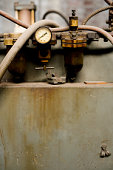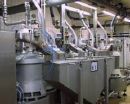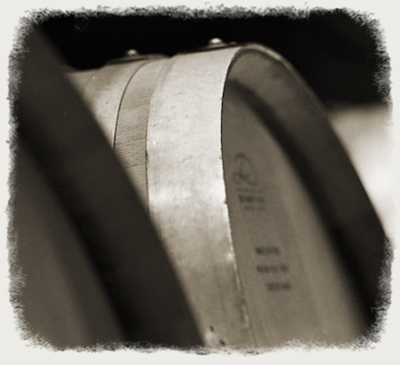There are three large scale methods of processing vinegar- orleans method, generation method and submerged fermentation method.

Orlean method is one of the oldest actual methods for production of vinegar. It is an aerobic method which the greater the amount of oxygen gets into the bacteria the better the production of vinegar.
Generator method is controlling the air flow therefore also controls the amount of oxygen to the bacteria. It is usually used for large scale purposes and uses porous materials which increase surface area and allows maximum supply of oxygen to the bacteria to increase the production of vinegar.

The submerged fermentation method is the most modern method used today for production of vinegar. It introduces a pump at the bottom of the generator which produces tiny bubbles that covered the entire mash. This method produce maximum amount of oxygen at all times in the mash and time necessary for conversion from several months, to several days. We focus on this method for the production of vinegar as it is the most efficiency and gives the greatest amount of vinegar over a short period of times. We use the LABU 600 vinegar machine for the production. During the process, it is important to take note of controlling the acetic acid and labeling of vinegar, technical data and power consumption.
The Orleans method
The Generator Method
The submerged fermentation method
1) Large stainless steel tanks called acetators filled the production plants and pump air bubbles from the bottom of the tanktogether with centrifugal pumps. LABU vinegar machine is used in this method. The vinegar machine is filled with liquid and vinegar bacteria. The machine is controlled by air control and adding of liquid and vinegar bacteria is added from the machine itself. The temperature is kept under 28 ℃. The cooler temperature panel is kept at 29℃ during vinegar oxidation.
For working with the machine, two plugs with 220V/50 Hz of electricity (machines with a filling of more than 150 litres is made to 110/50Hz) and cold water for the cooling system are needed.
2) Acetozym nutrients are piped into the tank as the pump stirred the tank. The nutrients promote the growth of acetobacters on the oxygen bubbles. The acetic acid is controlled every day. It usually takes 5 to 7 days to reach the usual amount of acetic acid. 3 days of processing is usually enough for single vinegar type. Variety of vinegar will take more than 3 days to process. When processing a variety of vinegar, it is necessary to remove one third of the filling and replace with fresh fruit wine.
Normally 1 % vol. of alcohol brings 1 % acetic acid.
The vinegar is kept in separate container with fully fermented. The best place is cool under 10℃ and dark. The vinegar is then cleaned by filtering before used.
3) The heater kept the temperature of the tank between 80℃ and 100℃.
4) Alcohol product was converted into vinegar after a few hours and vinegar is removed from the acetators to a plate-and-frame filtering machine.
5) The alcohol passes through paper filter and removed sediments. The sediments were removed into a drain while the filtered vinegar moves to the dilution station.
6) Lastly, vinegar is kept in bottles and labeled. The labels on the bottles include the following information:
- Name of the producer
- Address of the producer
- Product name and fruit variety
- Content of acetic acid
- Quantity of content
- Storage information
- A batch number
- In some countries you will need also nutrient information on the labels
Technical data
Submerged vinegar plant for professional and fast conversion from wine and fruit wine into vinegar is conform with CE Norm.
Parts of LABU 600:
1) Electronic controlling
2) Stainless steel tank with acidity resistent pumps
3) Venturi air nozzles
4) An electricity saving 220 V heater
5) An overheating protection (to save the vinegar cultures in case there are problems with the cooling water)
Size: 600 litres filling quantity
Diameter outside: 1030mm
Height: 1300mm
Weight: 146kg
Power consumption
The LABU vinegar machine was constructed for extra low power consumption. The heating system is only necessary when you fill the machine with cold liquids.Heating or cooling swith-point can be adjusted by our own.
Power consumption of the pump: 1770 watt
Heater: +500 watt